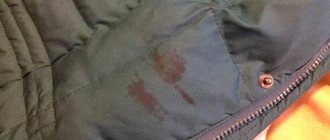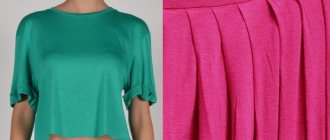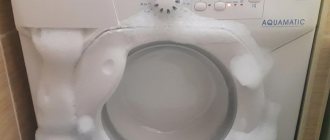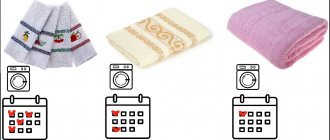142
like
4 minutes
Blankets are very popular in Russia - large scarves-blankets with fringes, which are so pleasant to cover yourself with in the off-season and in winter. Like other home textiles, they require regular care.
The question of how to wash a blanket is asked by many housewives, since the loose structure of the products, as well as static electricity, contribute to the rapid accumulation of dust. It’s hard not to notice it when you lay out a blanket that hasn’t been washed or dry cleaned for more than 1-2 months. Dust is an ideal habitat for saprophytic mites. Since these things are designed to give coziness, comfort and health, their cleanliness is a prerequisite for use in everyday life.
How to support it? Expert advice from CLEAN EVERYTHING will help you solve the problem in the simplest way.
One of the most frequently asked questions is whether you can wash a blanket by hand or is it better in a machine? Not every housewife can wash such large items by hand:
- When wet, the blanket, the size of a blanket, is difficult to even lift, let alone squeeze out the water. On the one hand, this is good, it means that excessive twisting will not deform the product. On the other hand, how to dry it - how long will it take a blanket to dry without spinning?
- You will need a bath for washing. Even in a large basin, it is difficult to thoroughly wash and rinse a blanket.
- Not all blankets can be washed. For example, for products made of natural wool, silk, viscose, the wet cleaning method is contraindicated. Although our housewives can do this too.
IMPORTANT : make the choice between washing and dry cleaning taking into account the manufacturer's recommendations regarding acceptable care technologies.
Do you want to calculate the cost of dry cleaning? There is now a 30% discount for you!
Knowing how to wash a blanket - large or small, you can decide whether you want to do this or whether it is better to entrust the dry cleaning of the blanket to the specialists of a specialized company. We offer you our services, as well as a proven hand washing algorithm with the best results with the least amount of labor:
- fill the bath with water at the temperature indicated on the product label;
- dilute textile detergent in water;
- soak the blanket in the solution for 1-2 hours;
- gently rub the most greasy places;
- drain dirty water, freeing the drain;
- Fill the bath with clean water at the desired temperature several times, rinse the blanket, and drain the water.
- The final rinse water can be softened with textile softener;
- let the water drain. Then they roll up the blanket and place it in the bath for half an hour, so that some of the water can drain out. After this, they unfold it and hang it flat on a strong stick to dry.
The most common blankets
- Made from natural materials
- Cotton.
- Cotton and linen.
- Wool fabric is heavy and warm, usually used in cold seasons.
- Cashmere bedspread.
Natural fabrics are relatively more expensive, but the use of natural fabrics has a number of advantages: they absorb odors less, allow air to pass through, retain heat, do not cause allergies, and others. However, they require special, gentle care.
- Made from polyester.
- Fleece is one of the most widely used, it allows air to pass through well. Even children are covered with fleece blankets. The only drawback is the high degree of flammability and electrification.
- Microfiber – breathable. Microfiber is made mainly from polyester and acrylic.
- Viscose and acrylic are not electrostatic fabrics; they hold color well, so they are an order of magnitude brighter than other products; they are also “breathable” fabrics and retain heat well.
- Faux fur is usually used in combination with other materials, either artificial or natural fabrics. This fur lasts a very long time and looks harmonious.
Difficult spots
If there are complex and old stains on the fabric, it is necessary to first clean the affected areas. But you can’t immediately apply stain remover to a blanket - first we check the fibers for strength and pigment durability by smearing an inconspicuous area from the inside out. If the material has faded, then a more gentle cleaner is needed.
It perfectly removes stains from polyester with various types of laundry soap. Table salt sprinkled on top can also absorb dirt from synthetics. It is better to clean colored items with 10% brown, quenched citric acid. The selected product is applied to the stained area and rubbed in with the convex side of a spoon. The smooth surface of the device will prevent the fibers from deforming.
Preparation
Over time, the owner will certainly notice that the item needs to be refreshed. How to wash a blanket without damaging the color or structure? Is it machine washable? Of course you can!
If your machine is designed for 5 kg of laundry or more, you can safely load a blanket into it
But you need to select the correct temperature and spin force, take into account the capabilities of a particular washing device, drum volume and weight limit.
Whether a blanket can be machine washed depends on its size and material.
Rules for washing polyester and acrylic bedspreads in the washing machine
Acrylic blankets are durable, beautiful, and last a long time if used correctly.
Label for a polyester blanket indicating instructions for caring for the product
- Choose the lowest possible; temperature regime (up to 30C) for delicate fabrics.
Delicate machine wash mode at 30 degrees - Use liquid powder and fabric softener to avoid white streaks and reduce electrostatic properties. Fill the air conditioner with freshness and softness.
There are special products for washing blanketsFabric softeners will make the blanket soft and smell nice
- In the automatic machine program, select “manual mode” or “synthetic”.
- Set the spin to minimum.
Manual cleaning of acrylic and polyester blankets is not an easy task. Please note that these items take on a lot of water, making them difficult to lift and carry.
For hand washing you need:
- fill the bathroom with water (up to 30C);
- Add powder;
- Soak for at least 10 minutes;
- Perform manipulations with light movements for 5-10 minutes;
- Drain the water and add new water, repeat the rinsing process several times;
- Add fabric softener and rinse again;
- Drain the water, hang it over the bathtub and let it drain;
- Take it to the balcony and hang it, avoiding direct sunlight.
Hand washing a blanket in the bathroom
Drying Features
To prevent the product from losing its shape, it should only be dried in a horizontal position. How to do it right?
- The swollen linen in the bathroom is laid out on a flat surface, previously covered with oilcloth and well-absorbing natural material.
- When the fabric is saturated with water, it is replaced with dry material, and the decorative blanket is turned over. The procedure is repeated several times.
- If the product is thick, you can first wrap it in a terry towel and lightly knead it with your hands. And while drying unfolded items, turn on a fan next to the table. These measures will speed up the process of evaporation of liquid from the fibers.
- Products with long pile are combed when wet. The surface of the plush blanket is smoothed with a soft brush when it is completely dry.
If the decorative blanket will not be used after washing, it is rolled up and placed in a pillowcase or in a cotton bag.
Washing a blanket of any size and quality at home is a difficult task, but quite doable. If you strictly follow the recommendations, the decorative bedspread will retain its appearance and properties for a long time.
Viscose and microfiber material
Viscose blankets may shrink, but are soft, durable and practical
A microfiber blanket can be washed in the same way as blankets made from other materials, but cannot be dried in radiators or in the sun.
- Place the machine in the drum of the machine. Set the mode to “delicate”.
- The temperature should not exceed 30 degrees, otherwise it will settle and change shape and size.
Washing the blanket should be done in cool water - 3 degrees - Add liquid powder.
To wash the blanket we use liquid gel - Set the spin speed to no more than 800-100 rpm.
- Hang in a place out of reach of sunlight.
The method described above is suitable for hand washing, as well as for polyester and acrylic. The only difference for microfiber is that you do not need to use rinses and conditioners. The latter can damage the fabric structure.
Helpful Tips:
- To prevent the bedspread from accumulating dirt and dust during storage, you can wrap it in an old pillowcase.
- It is not advisable to store such products in plastic bags, because due to the lack of ventilation, an unpleasant odor may appear, as well as moths and other pests.
- It is better to dry clean a blanket made of natural fur, since this material does not tolerate moisture well, and it can react completely unpredictably to any home cleaning methods.
How to wash a faux fur blanket, the so-called “terry” blanket, in a washing machine
It is better to wash a faux fur blanket with a liquid detergent and with minimal spin.
- Before the procedure, be sure to shake out and get rid of debris (crumbs, animal hair);
- Make sure that the drum can withstand the weight load, otherwise the unit may be damaged.
- Pour liquid powder and rinse aid into the special compartment;
- Set the “synthetic” mode.
The “synthetic” washing mode is perfect for faux fur blankets - Choose the lowest spin possible.
It is better to wash blankets made from faux fur in a machine with the spin function turned off.
Upon completion of the process, the terry product must be hung outdoors, ideally in a draft, why? Yes, because if it dries indoors, it will develop a smell, an unpleasant odor of dampness and staleness. Washing a terry blanket by hand will be very difficult, and the water will drain from it for a very long time, which is guaranteed to create an unpleasant smell. But if there is no other way out, then follow the rules outlined below.
- Add enough liquid to the bathtub to completely submerge the blanket.
- The temperature should not exceed 35C.
- Add liquid powder for delicate washing.
- Distribute the product evenly throughout the bath.
- Immerse and wait 10-20 minutes.
- Without using force, wash with smooth movements.
- Rinse several times and let it drain naturally.
- Dry the blanket, following the recommendations for a machine.
Careful care will certainly preserve the delicate fabric and fill the blanket with softness and freshness. Remember that when washing products made from any material, you should not use bleaches or powders containing them. Do not apply detergents to individual areas or scrub them aggressively. This will ruin the structure and color.
Preparatory activities
You can tidy up your blanket in different ways. However, no matter what cleaning method is chosen, it is first necessary to carry out preparatory measures:
- Remove dust from the decorative blanket. To do this, lay it out on a wide bed or on a large table covered with an old sheet and clean it with a vacuum cleaner. You can remove dust accumulated in the product in another way: take it out into the fresh air, hang it on a bar and beat it out with a carpet beater. If you ignore this stage of preparation, during washing, dust will appear on the pile in the form of dirty stains, which will complicate an already labor-intensive job.
- Using a sticky roller or soft brush, remove animal hair and debris stuck between the fibers from the surface of the product. During washing, all this will stick to the pile and remain there.
- Inspect the item for stains and, if any are found, wipe them off locally. The best way to do this is to use a carpet cleaner. If you don’t have it on hand, an aqueous solution of vinegar will do, and for light-colored products, soda slurry or lemon juice.
Natural materials
Bedspreads made from natural materials are very easy to care for; it is very easy to spoil such materials. However, all housewives know that washing cannot be avoided. Then the question arises: is it possible to wash a blanket in a washing machine or is it better by hand?
A beautiful silk bedspread looks great, but requires special care
Silk materials are items made from delicate fabrics; they are strictly not recommended to be washed in a washing machine, and especially not to be wrung out.
- Wash by hand and only with liquid powder. Do not use fabric softeners or fabric softeners.
Silk bedspreads can only be washed by hand and in cold water. - Use cool water.
- Wash without applying force, do not rub individual areas, otherwise a noticeable stain will appear.
- Allow the water to drain naturally.
After the liquid has drained, the silk blanket should be laid out on a flat surface away from sunlight. Preferably outdoors and turn over as it dries.
Dry cleaning
Blankets, especially those with long pile and made from natural fibers, do not like unnecessary contact with water . It is recommended to wash the decorative coating no more than once every six months. But if necessary, you can refresh it at any time using the “dry cleaning” method. It is carried out in the following sequence:
- Cover a flat surface (for example, the floor or a large table) with polyethylene. Lay an old sheet over it.
- Place a blanket, previously cleared of debris and dust, on the prepared area.
- Pour warm water into a bowl. Add liquid detergent, or clear shampoo, or carpet cleaner. Beat the mixture until foam forms.
- Apply foam to the pile of the product using a clothes brush or sponge. Wait until it is completely dry.
- Using a vacuum cleaner with a plastic attachment or a dry brush, remove any remaining mixture from the surface of the rug.
- Walk over the surface of the product with a slightly damp sponge. When the water dries, shake the blanket.
Wool and cashmere products
Cashmere blanket is soft, fluffy and silky, but very difficult to care for
It is better to wash bedspreads and blankets made of wool by hand.
Practice shows that you can wash such bedspreads in a washing machine, but this is not always safe, even if you follow all the recommendations, sometimes it is impossible to achieve the desired result, you may even ruin the item, so it is better to contact professional cleaners and dry cleaners. Of course, if this is not possible, then proceed to hand washing or machine washing.
- Select the “wool”, “manual”, “delicate” mode on the machine.
- Squeeze at a minimum speed of 400 rpm or stop squeezing.
- Choose only liquid powders, soaps, preferably special products for cashmere and wool.
For any washing method, it is better to use a liquid detergent for delicate fabrics. - Do not expose to high temperatures, no more than 30 degrees.
If you refuse to spin, let the liquid drain naturally, away from heat. Do not hang woolen items. They will become deformed or sag and decrease in size.
Hand washing wool products
- Fill a container with a large amount of water, no more than 35 degrees.
- Dissolve the detergent evenly.
- Immerse the blanket and soak for a couple of hours.
- Wash with light movements and rinse several times.
- Squeeze it lightly with your hands and place it on a horizontal surface as flat as possible.
We can remove dirt from wool or cashmere in another way - dry cleaning
How to solve laundry problems
The item may roll up and become hard due to an excessive amount of foam that is not rinsed well. To completely remove soap particles, you need to rinse the laundry vigorously.
Sometimes a washed product “shrinks” and becomes smaller. The problem is specific to wool. It is quite possible to return the original appearance of a thing. It is enough to wash it again without using soap or at least soak it in clean water. After this, dry the blanket, evenly stretching it to the sides. Using a steamer to solve the problem is even easier: you need to carefully steam the product from the inside out, stretching it a little. The wet pile will take the desired shape.
Pellets may appear on the fibers. To avoid this situation, you must:
- wash by hand more often, because friction against the drum of the washing machine can cause the material to pill;
- use mild detergents: powder increases friction, which is the main reason for the appearance of pills;
- avoid overdrying;
- limit the use of balls: they increase friction and lead to acrylic and wool rolling;
- remove the pellets with a special machine. The blade is not suitable for this purpose: it can damage the fabric.
Cotton
Cotton and cotton bedspreads can be machine washed using any powder and rinse aid. The maximum permissible temperature is 60 degrees. Hand washing is no different.
Cotton items are machine washable at 40-60 degrees











